


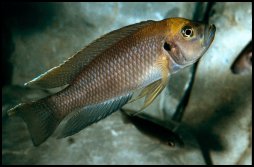
![]() .Neolamprologus
callipterus
.Neolamprologus
callipterus
![]() Neolamprologus
signatus m.
Neolamprologus
signatus m.
Neolamprologus signatus female![]()
Neolamprologus ocellatus![]()
Neolamprologus meleagris.![]()
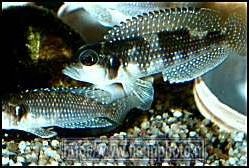
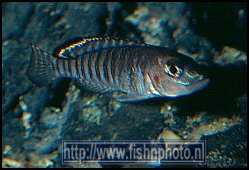
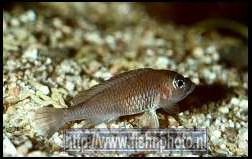
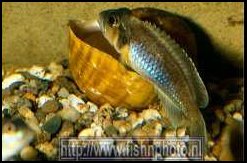
   | ||
| Obligate
Sheldwellers | ||
 |
|
|
|
|
|
|
| That
certain cichlids live in snails shells is considered by science as an evolutionary
development: Cichlids that due to overpopulation were evicted from their holes,
attained outside of the litoral zone and had to find a new shelter. The far greater
part of these animals felt pray to predators. Some of them probably succeeded
to attain an other rocky shore and from them came into being a new variety or
perhaps just a new species. Others stopped at the empty houses of snails (Neothauma
tanganyicense) in which they found shelter at danger. At least as the were
small enough to fit in them. The ones that grew to great still became pray to
the predator. This selection in the course of times brought forth separate small
staying species. In view of the rich variation of species that development must
be taking place during quite innumerable thousands of years. |
Neolamprologus wauthioni (POLL, 1949), Neolamprologus meleagrisch (BUSCHER, 1991), Neolamprologus speciosus (BUSCHER, 1991) The species are qua behavior and size (males become approx. 6, females 4 CMS) and their pattern and colors as well as good perceptible Neolamprologus ocellatus has a rather inconspicuous suit without something exiting or it should be the bluish metallic shine on the flanks, but we find this back in more or lesser degree on the flanks of Neolamprologus meleagris and Neolamprologus speciosus. The last one is recognizable at the indistinct zebra pattern, N. meleagris has a number of rows with white points in the dorsal fin that you can't let by. The males and females have a snail shell each. They are on the sandy bottom and are buried n that way that only the opening stays on surface. In nature there is a matter of evident pairing. In the males are inclined to polygamy which one male allows more females in his territory mates with them intermittent and brings up the offspring. Translated to circumstances in the aquarium it means, that we accommodate them in an aquarium with a obvious sandy bottom (the gravel on the photographs above is a clear failure). As for the number of specimen it seems reasonable to bear in mind that this little fishes may display a firm mutual aggression.Neolamprologus calliurus (BOULENGER,1906) has been considered for a long time as Neolamprologus brevis and named also by that name. Who is looking well can see that the males of the species pictured here has a Tallinn with the outer finbones are elongated a little what results in a lyre-shaped tail. Also the stain behind the eye generally is much larger an more bright. There are populations in the neighborhood of Tembwi and also at the northeasterly shore. The males each have an own snail's shell. |